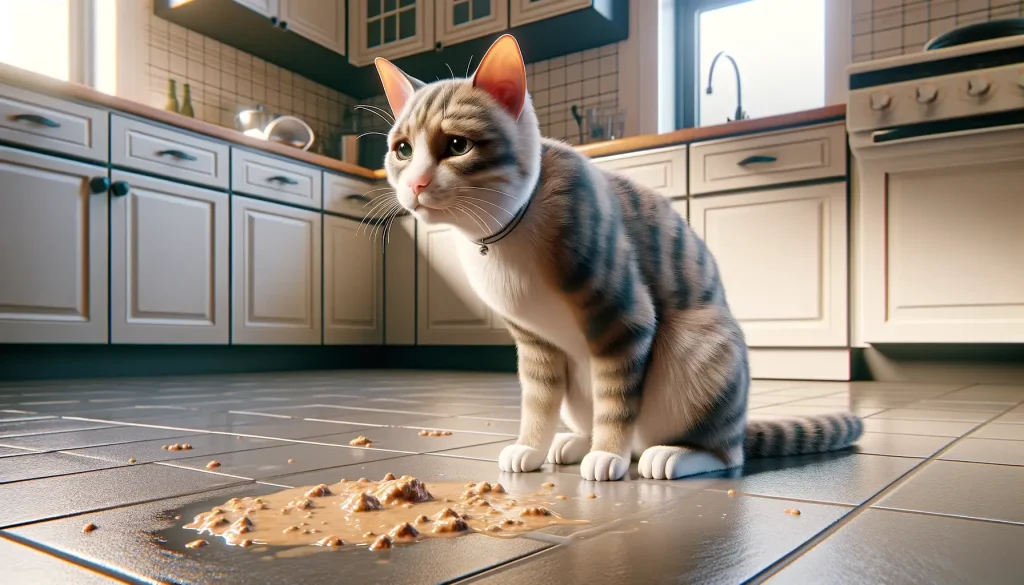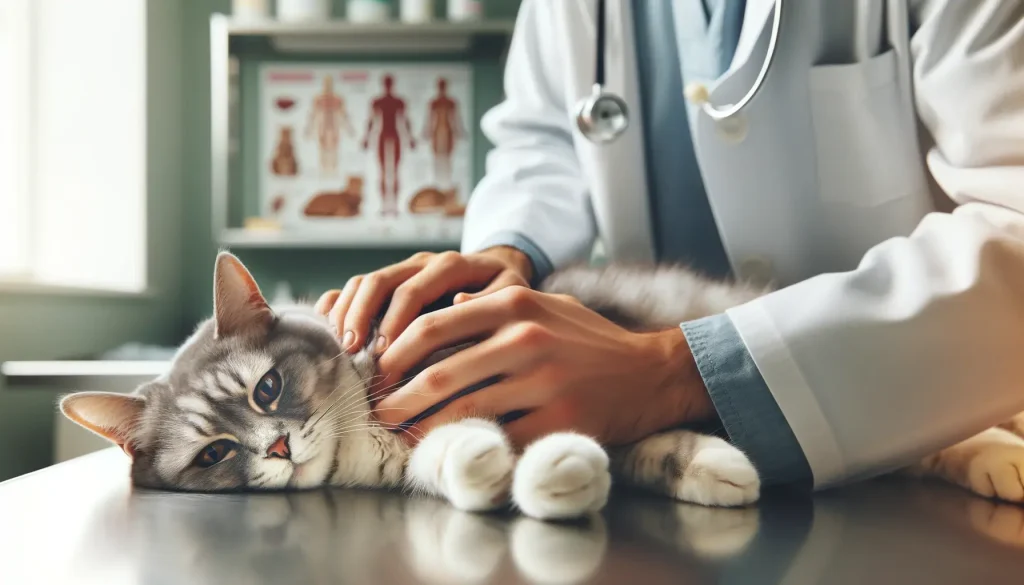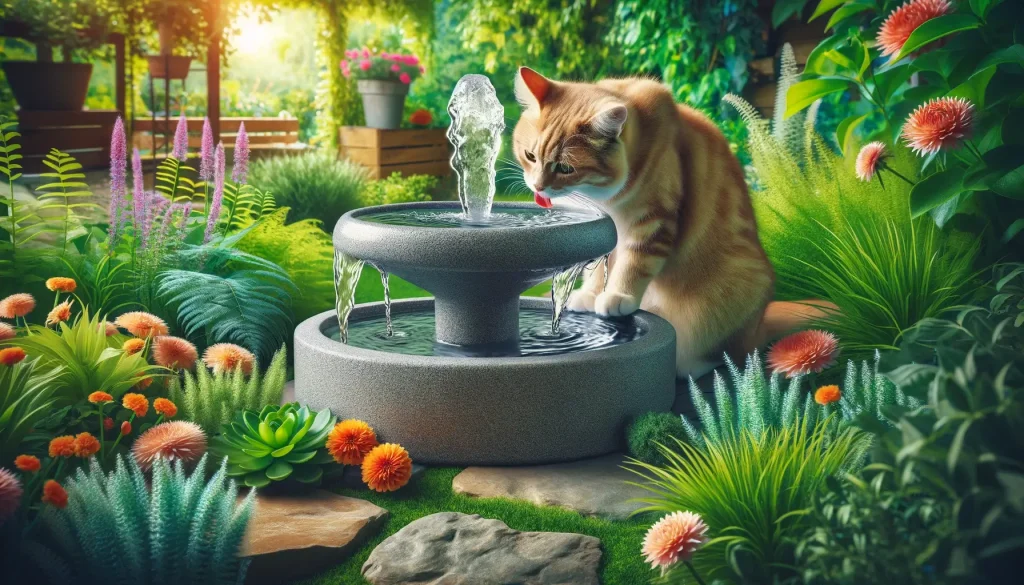
Vomiting in cats can alarm and confuse pet owners, raising questions about the causes, when to worry, and how to provide care. This comprehensive guide delves into the multifaceted issue of cat vomiting, offering essential insights for pet owners to understand why cats vomit, identify common triggers, and distinguish between situations that can be managed at home versus those requiring veterinary intervention.
The occurrence of vomiting in cats is not as uncommon as some might think, with reasons ranging from relatively harmless to those necessitating immediate medical attention. By understanding the various causes, such as hairballs, rapid eating, or the ingestion of problematic substances, cat owners can take proactive steps to mitigate these issues. Regular grooming, adjusting feeding practices, and ensuring a safe environment form the cornerstone of preventing many vomiting episodes.
However, not all causes of vomiting are straightforward to address. Continuous vomiting, lethargy, or behavioral changes accompanying vomiting are red flags signaling the need for professional veterinary evaluation. This guide not only provides a roadmap for home care strategies and preventive measures but also underscores the importance of recognizing urgent symptoms that warrant a prompt vet visit.
Why Cat Vomit?
Vomiting in cats is more common than most pet owners realize. It can stem from various causes, some benign and others requiring immediate veterinary attention. By knowing the common triggers and how to respond, you can ensure your feline friend stays healthy and happy.
Common Causes of Vomiting in Cats include:
- Hairballs: While grooming, cats ingest fur, forming hairballs. These can cause vomiting, though regular brushing may mitigate the issue.
- Regurgitation After Eating: Cats that eat too quickly may bring up undigested food. Smaller, more frequent meals or slow feeders can help manage this.
- Eating Problematic Substances: Ingesting inedible objects or spoiled food can lead to vomiting. Monitoring your cat’s environment closely is crucial.
When to be Concerned About Your Cat Vomiting:
- Continuous Vomiting: Multiple or persistent vomiting episodes are a red flag. It’s important to consult a veterinarian to prevent dehydration or worse.
- Symptoms Accompanying Vomiting: Pay attention to signs like lethargy or unusual behavior accompanying vomiting. These can indicate a more serious health issue.
Preventive Measures and Care are paramount. Keeping your cat’s living area clean and monitoring their diet and behavior closely can fend off many vomiting incidents. For specific concerns or if your cat’s vomiting persists, seek personalized advice from a veterinarian to address underlying causes effectively.

Urgent Symptoms in Your Vomiting Cat
While it’s not uncommon for cats to vomit occasionally, recognizing when vomiting warrants an immediate vet visit is crucial. Let’s delve into scenarios that should prompt concern among cat owners.
Serious Signs Accompanying Cat Vomiting:
- Continuous Vomiting: If your cat cannot stop vomiting or vomits numerous times in a short period, it’s a critical sign. Continuous vomiting can lead to dehydration and requires urgent veterinary attention.
- Lethargy and Behavioral Changes: A cat showing signs of excessive sleepiness, lack of appetite, or unusual behavior alongside vomiting is alarming. These symptoms could indicate a more severe underlying health issue.
How to React to Serious Vomiting Incidents:
- Don’t Delay: If you observe these worrying symptoms, don’t wait. Immediate veterinary consultation is essential to prevent potential health complications.
- Keep Records: Note the frequency and appearance of the vomit. This information can be vital for your vet to diagnose the issue accurately.
Vomiting can be a sign of something more serious, such as gastrointestinal blockages, infections, or systemic diseases. In some cases, inducing vomiting might be necessary, but this must never be done without professional guidance. Inducing vomiting inappropriately can cause more harm than good and should only be attempted under a vet’s direction.

Home Care vs. Vet Visit
Vomiting in cats can be worrying. Knowing when you can handle it at home and when to see a vet is key. Here, we break it down.
Home Care for Cat Vomiting:
- Hairballs: Regular brushing helps minimize hairballs. It’s a simple yet effective method to keep those furry troubles at bay.
- Regurgitation After Eating: Slowing down your cat’s eating pace can prevent regurgitation. Try using slow-feeders or dividing the food into smaller portions.
- Eating Problematic Substances: Keep your home free of small inedible objects and ensure your cat’s food is fresh. This prevents most cases of vomiting.
These steps can handle common causes of vomiting. Yet, some cases need expert care.
When to Visit the Vet:
- Continuous Vomiting: If your cat can’t keep anything down, it’s time for expert help. Continuous vomiting is serious and can lead to dehydration.
- Symptoms Accompanying Vomiting: Lethargy, avoiding food, or odd behaviors alongside vomiting suggest a deeper issue. A vet can diagnose and treat these problems.
Steps to Prevent Cat Vomiting
Vomiting in cats is not uncommon, but frequent episodes can be a cause for concern. Understanding how to prevent cat vomiting is crucial for any pet owner. Here are actionable tips to help keep your cat healthy and reduce the chances of vomiting.
- Regular Grooming: One primary cause of vomiting in cats is hairballs. Regular brushing reduces the amount of hair your cat ingests during grooming, minimizing hairball formation.
- Monitor Eating Habits: Cats that eat too fast are likely to vomit undigested food. Use slow-feeder bowls or feed smaller, more frequent meals to help manage this issue.
- Safe Environment: Keeping your cat’s environment free from small, inedible objects and ensuring that all food is fresh and suitable for cats can prevent vomiting due to ingestion of harmful substances.
- Regular Check-Ups: Routine visits to the vet can catch and address any underlying health issues that may cause vomiting.

Tailoring Meals for Feline Digestive Health
Navigating Food Sensitivities and Allergies
Cats with chronic vomiting may suffer from underlying food sensitivities or allergies that require a tailored dietary approach. Identifying specific allergens through elimination diets, under a vet’s supervision, can pinpoint the cause of gastrointestinal upset. Once identified, feeding your cat a limited ingredient diet that excludes known allergens can drastically reduce vomiting episodes.
Probiotics and Digestive Enzymes
Incorporating probiotics and digestive enzymes into your cat’s diet can further support digestive health. Probiotics help maintain a healthy balance of gut bacteria, which is essential for a robust digestive system. Digestive enzymes can aid in the breakdown of food, making it easier for your cat to digest and absorb nutrients, thus minimizing the risk of vomiting.
Balanced Hydration
Beyond solid food, ensuring your cat has access to clean, fresh water at all times is crucial for preventing dehydration, especially after vomiting. Some cats may benefit from wet food diets or the addition of water or broth to their food to increase fluid intake.
Mindful Feeding Practices
Mindful feeding practices, such as serving smaller, more frequent meals, can prevent the stomach from becoming overly full, which can trigger vomiting. Also, ensuring a calm and quiet feeding environment helps reduce stress, which can be a contributing factor to digestive issues.
Regular Veterinary Check-ups
Regular check-ups with your vet can help monitor your cat’s response to dietary changes and ensure that their nutritional needs are being met without exacerbating vomiting episodes. These visits are also an opportunity to adjust the diet as needed and to screen for other health issues that might contribute to vomiting.

Feline Health with Proper Hydration
Keeping your cat adequately hydrated is a cornerstone of preventing health issues, including vomiting. Cats naturally have a low thirst drive, which means they may not drink enough water on their own. Ensuring your cat receives enough fluids is essential, especially if they are prone to vomiting, to prevent dehydration and support overall health.
Tips for Promoting Hydration
- Water Bowls: Keep fresh, clean water available at all times in multiple locations. Some cats prefer running water and may benefit from a cat water fountain.
- Wet Food: Incorporating wet food into your cat’s diet can significantly increase their water intake. Wet food is about 70-80% water, making it an excellent hydration source.
- Flavoring Water: For cats who are particularly reluctant to drink, adding a small amount of chicken broth or tuna water to their drinking water can encourage them to drink more. Ensure any additives are low in sodium and onion-free.
- Ice Cubes: Some cats enjoy playing with or licking ice cubes. You can add these to their water bowl or offer them directly, especially during warmer weather.
Beginner Guide to Raising Quail at Home
What are the Signs of a Dog Concussion?
What Causes Your Dog’s Ears to Smell Bad?
When your dog’s ears start to emit an unpleasant odor, it might leave you puzzled…
Methimazole Treatment for Cat Hyperthyroidism
Methimazole plays a crucial role in managing feline hyperthyroidism, a condition marked by an overactive…
Got Hummingbirds in your Backyard? Here’s How to Care for Them.
Why Does Your Cat Pee Outside the Litter Box?
Cat’s Litter Box Issues It’s not uncommon for cat owners to face the frustrating dilemma…




